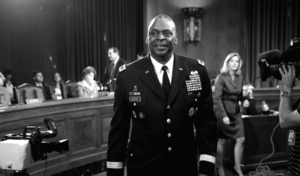True Crime Magazine Jeffrey Polaroids: Inside the Shocking World
Introduction:
Jeffrey Dahmer, infamously known as the Milwaukee Cannibal, sent shockwaves through America with his heinous crimes, claiming the lives of 17 young men. Among the chilling evidence that emerged were Dahmer’s Polaroid photographs, offering a macabre glimpse into the depths of his depravity. This article delves into the discovery of these Polaroids, their disturbing contents, and the broader impact they had on understanding Dahmer’s atrocities.
The Notorious Milwaukee Cannibal:
Jeffrey Dahmer’s name became synonymous with horror after his arrest in 1991. His spree of murders, characterized by necrophilia and cannibalism, horrified the world and left a lasting scar on American criminal history.
The Enigmatic Polaroids:
Rumors swirled about Dahmer’s Polaroid collection, with speculation that he had captured his victims in various states before and after their deaths. While only a handful surfaced publicly, the mere existence of these photos sent chills down the spines of those familiar with Dahmer’s case.
The Reddit Revelation:
The revelation of Dahmer’s Polaroids came to light through an unexpected source—a Reddit post showcasing gruesome images allegedly sourced from Dahmer’s own refrigerator. These photos mirrored descriptions provided by Detective Patrick Kennedy, offering a grim confirmation of Dahmer’s twisted acts.
Twisted Artifacts of a Serial Killer:
Dahmer’s Polaroids, depicting nude corpses arranged in suggestive poses or post-mutilation states, provided a disturbing insight into his modus operandi. Experts speculated that Dahmer used these photos to relive his crimes, showcasing his sadistic tendencies and warped fantasies.
Dahmer’s Disturbing Fantasies:
Beyond mere documentation, Dahmer harbored disturbing fantasies of transforming his victims into compliant, brain-dead entities using acid. He envisioned keeping them as subservient “pets” within his apartment, reflecting the depths of his depravity and detachment from reality.
Renewed Interest:
The resurgence of interest in Dahmer’s story, spurred in part by the Netflix documentary “Conversations with a Killer: The Ted Bundy Tapes,” brought his Polaroids back into the spotlight. This newfound attention reignited discussions about the nature of evil and the fascination with true crime narratives.
Circulation of Original Polaroids:
Despite efforts to suppress them, original Polaroids from Dahmer’s crime scenes continue to circulate through various channels, including law enforcement archives and online auction sites. These artifacts serve as chilling reminders of Dahmer’s atrocities and the enduring curiosity surrounding his case.
Discovery of Human Remains:
Investigators uncovered 11 skulls and other body parts scattered throughout Dahmer’s apartment, with some showing signs of consumption. Despite complaints about foul odors, Dahmer managed to evade suspicion, further highlighting the failures of law enforcement to apprehend him sooner.
Tracy Edwards’ Encounter:
The turning point in Dahmer’s downfall came when Tracy Edwards bravely flagged down police officers, revealing he had narrowly escaped Dahmer’s clutches. Edwards’ eyewitness account led to the discovery of incriminating evidence, including Dahmer’s Polaroids, sealing his fate.
Conclusion:
Jeffrey Dahmer’s Polaroids stand as haunting relics of his reign of terror, offering a glimpse into the mind of a remorseless killer. As society grapples with the legacy of such atrocities, these images serve as a sobering reminder of the darkness that lurks within human nature and the imperative to remain vigilant against its manifestations.
Read More You May Like:














Post Comment